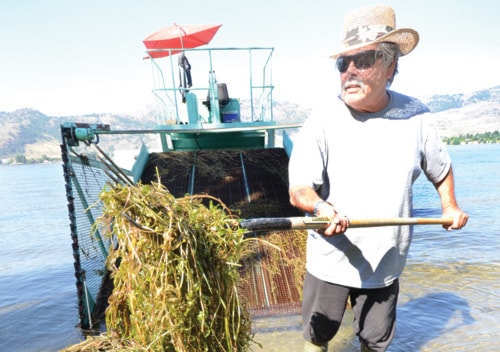An unfortunate bumper crop of milfoil has authorities considering a long-term response.
Growth of the invasive Eurasian milfoil is four to six weeks early in Okanagan lakes this year, and the conditions are considered the worst in 30 years.
“If this is the new normal, we’re not ready for it with the machines and staff we have,” executive director Anna Warwick Sears told Okanagan Basin Water Board directors Tuesday.
“It’s shocking how much more milfoil there is this year.”
It’s anticipated milfoil growth could continue to get worse if climate change leads to more early, warm temperatures, so the OBWB is working on an asset management plan for new and replacement harvesting equipment. A contractor has also been hired to increase harvesting capacity by 30 per cent. They will start on Osoyoos Lake and hit other areas later in the summer.
“We are running the harvester seven days a week, 10 hours a day to stay ahead,” said James Littley, OBWB operations manager.
Areas treated by OBWB crews over the winter, including beaches, are largely milfoil-free.
“Other aquatic weeds are also early and dense this year, which may increase public perception that milfoil is an issue,” said Littley in a report.
“However, we are not permitted to target other species and several thickly weeded areas are not infested with milfoil specifically.”
